Welcome to Ceramic Review
Ceramic Review is the magazine for contemporary and historical ceramics, ceramic art and pottery.
Ceramic Review Issue 334
July/August 2025
Ceramic Review is the magazine for contemporary and historical ceramics, ceramic art and pottery.
July/August 2025
Mark Goudy’s wave-like creations are made by combining 3D modelling with traditional techniques. Lauren Kearns uncovers the background to these complex forms
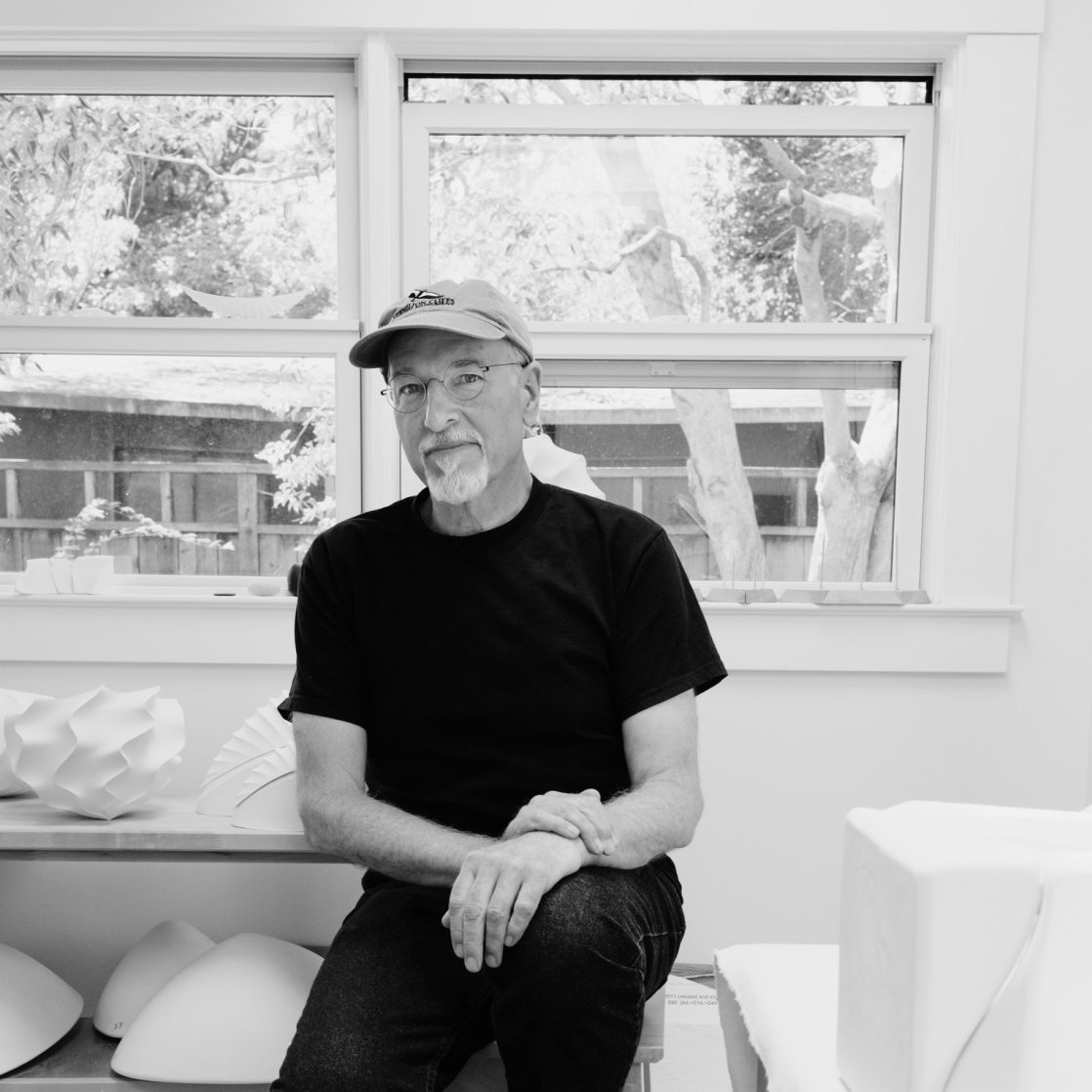
There are people in this world who create throughout their lives, then sometimes the stars align and they achieve success. There are also people who are artists with every material they touch. Mark Goudy is such an artist in both respects. He has been creating with different mediums all his life and now, with the combination of his talents in engineering, chemistry and ceramics, he finds himself in the spotlight of success, to both his surprise and pleasure.
However, he is not one to relish in the spotlight. Goudy wants his work to speak for him. Each aspect of his creations are wondrous in their unique form and finishing. In his own words he confesses that he doesn’t really know where his forms initially originate, though he knows their inspiration. Like many working artists, the work evolves with each creation, one step leads to another, with intrigue, a question or a new aspect to explore. It is a process without end as there are ‘too many ideas to create in one lifetime’.

EARLY INFLUENCES
Goudy grew up in Washington D.C. Though his mother had her own ceramic studio in the basement, at that time he only had a passing interest in ceramics. Instead, at 10 years old, he took up photography with a passion that lives on to this day in his extraordinary travel photos. He began photographing and making prints, back in the days of the analogue darkroom. He was also a musician, playing in bands throughout high school and college. His studies focussed on science and he earned a bachelor’s degree in biology at the University of Oregon. Then, after moving with his bandmates to Berkeley, California, he worked as a lab technician for the local water utility company.
His interest in music synthesizers began with classes in electronic music creation at the University of Oregon. Designing his own synthesizers at home led to a return to college, earning him a master’s degree in electrical engineering from San Jose State University.
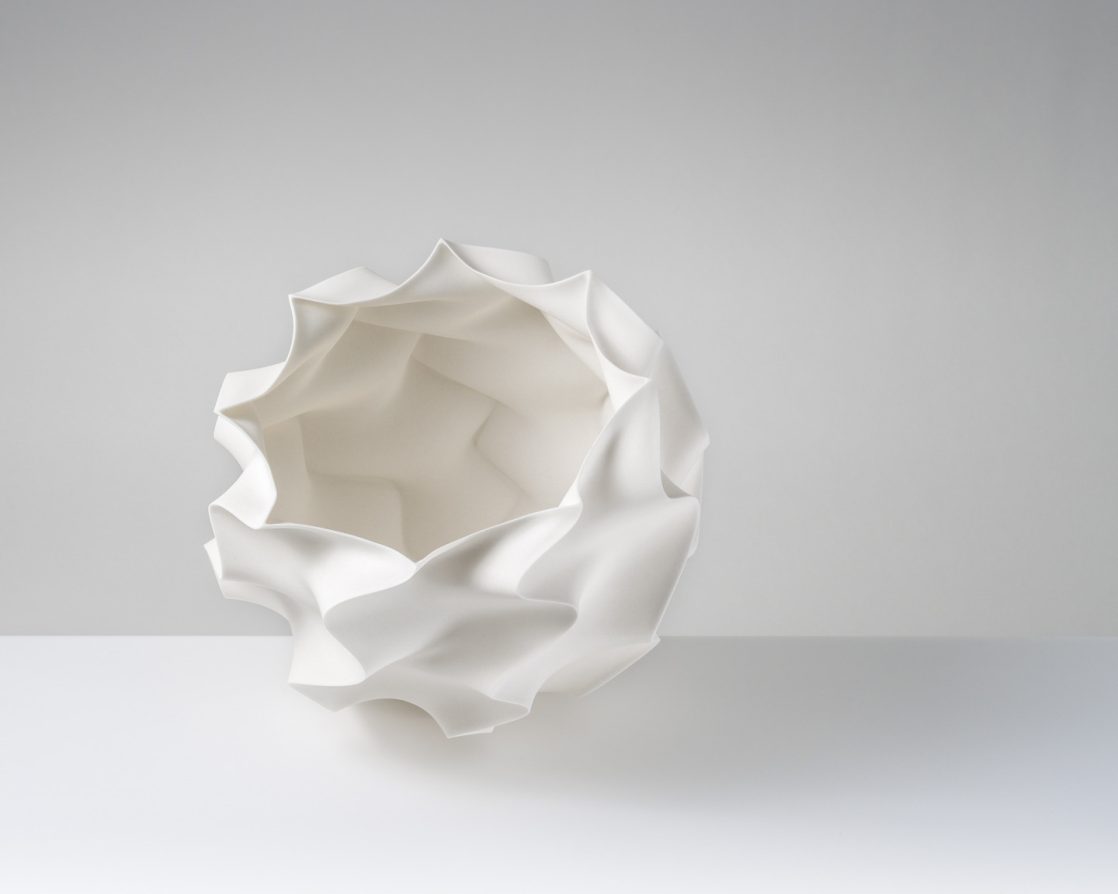
His first job out of engineering school was with the newly formed animation studio Pixar. His work with the Pixar Image Computer introduced Goudy to the world of image processing and 3D graphics, and he started his 20-year career as a logic designer in the 3D graphics industry. He describes this time at Pixar as ‘fun times’ working with some ‘insanely creative’ people. He then moved on to work for the 3D graphics companies Silicon Graphics and nVidia as a logic designer on chips for graphics workstations and desktop video games.
The entire time, Goudy continued with his interests in photography and music, however the tech world offered him knowledge and finances that he would later use for his creations in a totally new aspect of materials, ceramics.
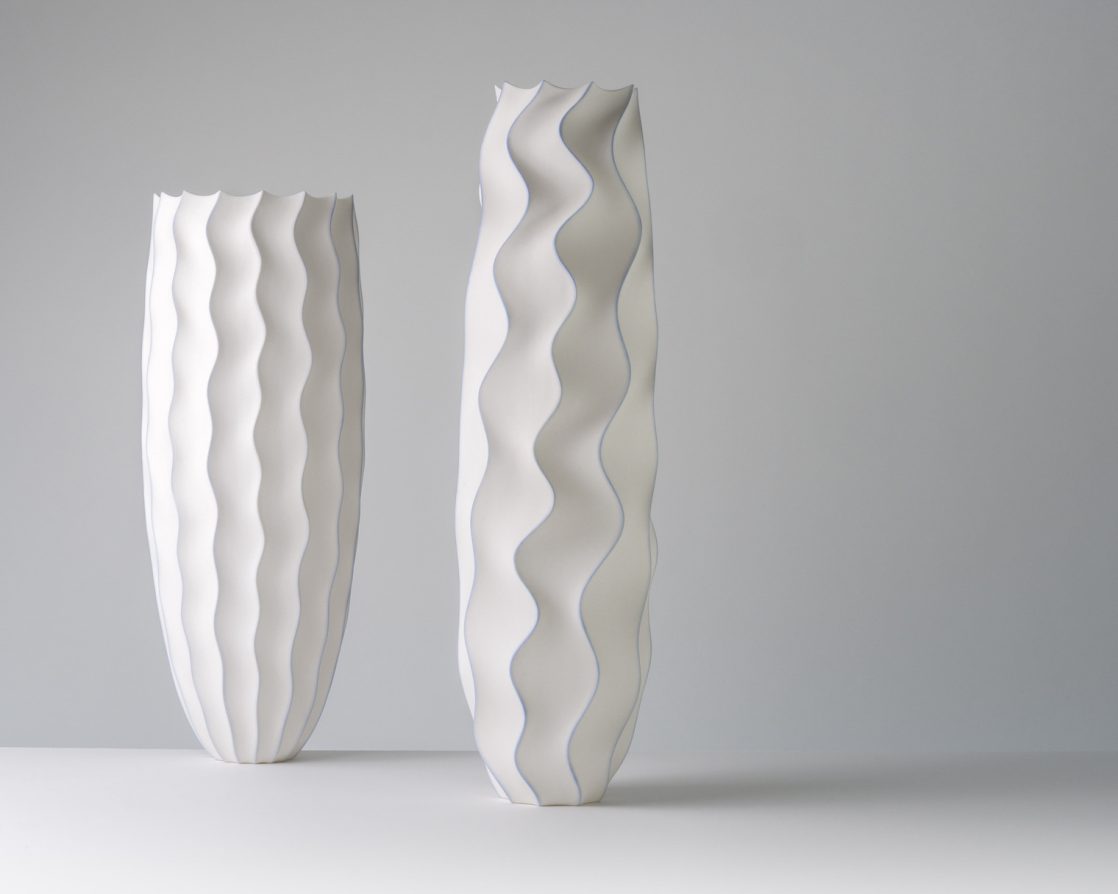
At Silicon Graphics, employees were encouraged to take a sabbatical to refresh and renew. During his second sabbatical, he and his wife Liza took their first six-month world tour. This was prior to the internet, so their travels were guided by fellow travellers and word of mouth, in the world he called ‘budget travel’ – youth hostels and budget excursions.
These early travels planted the seeds of wanderlust, which would later lead the couple to quit their jobs, rent out their house and spend a total of two years as travel nomads, exploring 65 countries to date. Returning home, they could not go back to their regular life with a nine-to-five job as they had both absorbed inspiration from their travels. It was time for a change, though the change would come gradually.
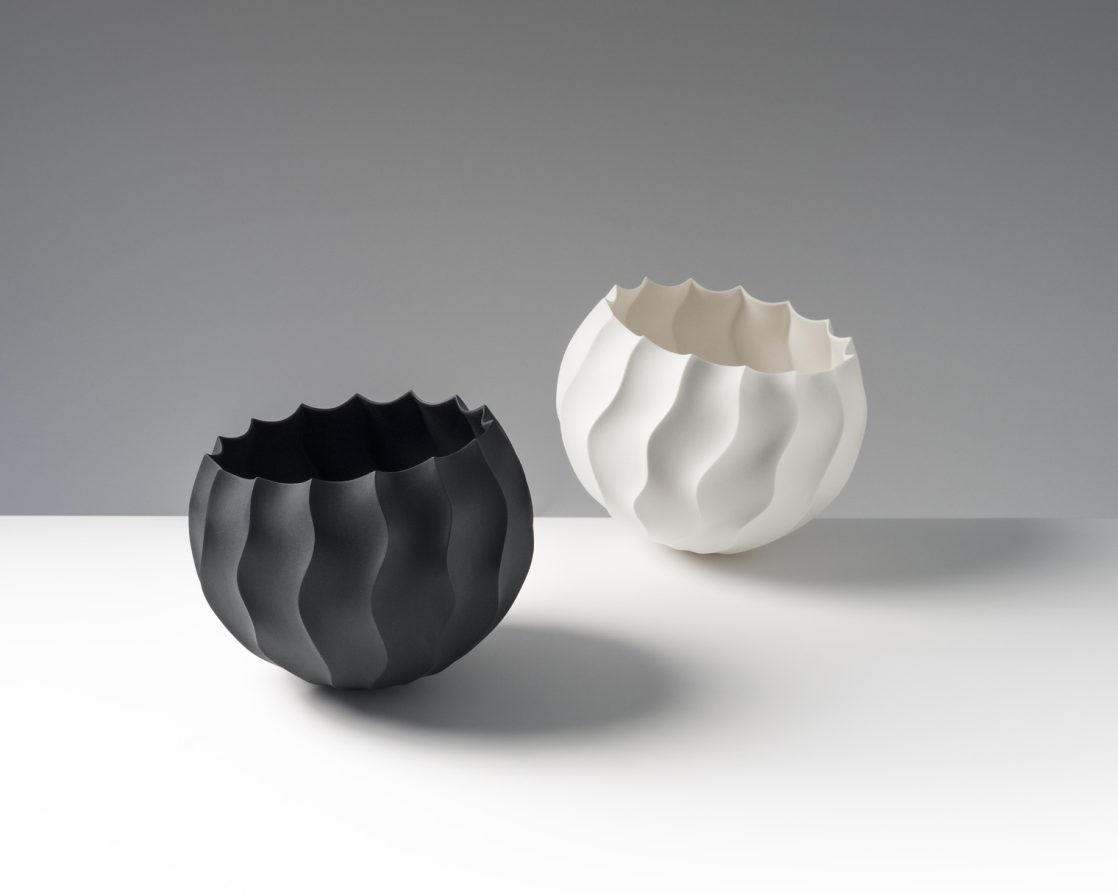
HAPTIC EXPERIENCE
Between travels, living in the Bay Area of California, the couple took classes in ceramics (finally, the clay part!) at the Center for Community Arts in Walnut Creek and Merritt College. Getting away from computers and making objects using his hands was the enticement. Goudy started handbuilding ceramics in his kitchen, then made slip-casting moulds from his handbuilt forms.
He likes unglazed ceramic surfaces, so his early work was burnished terracotta, he then moved on to mid-range porcelain. Like all ceramics people, he loves the feel of the clay, the focus and attention it requires when working with one’s hands and the joy of having created and built an object from scratch. His wife developed simultaneously into a ceramic artist of extraordinary talent in her own right.
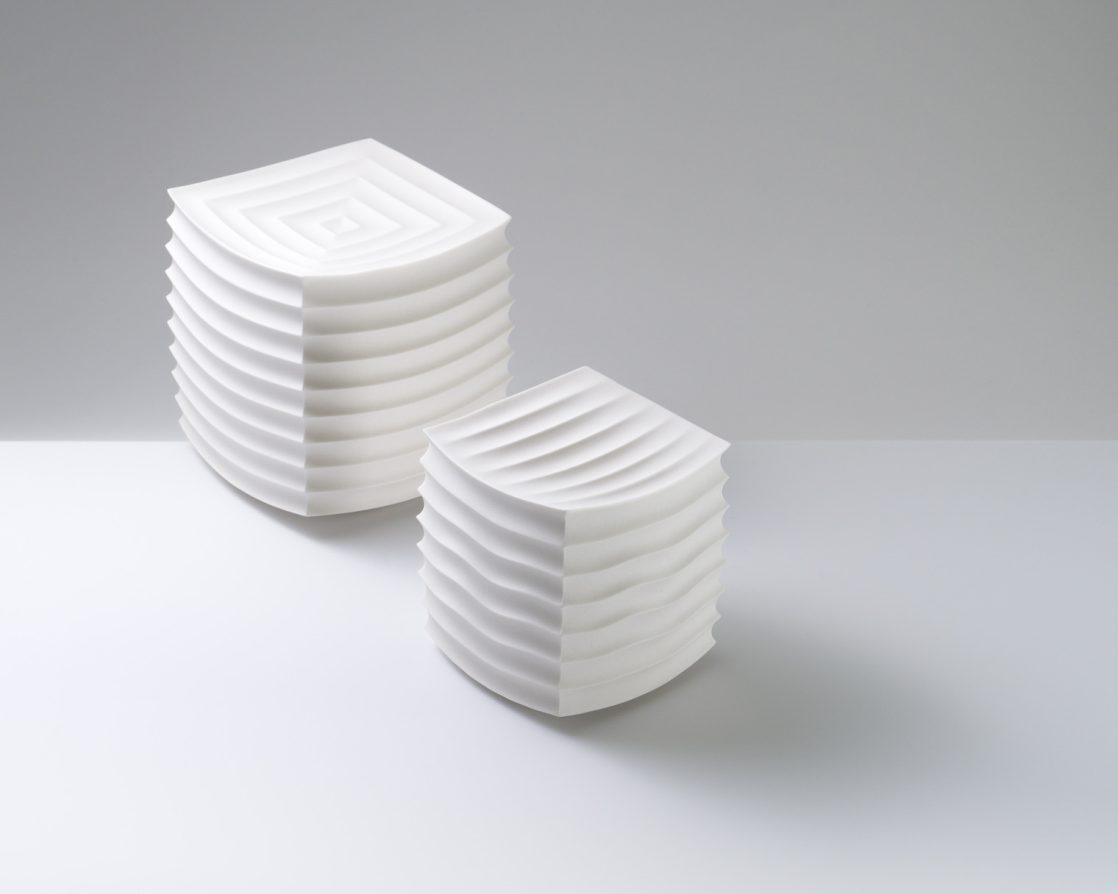
Early on, Goudy was exposed to the use of soluble salts by a local potter, Gary Holt, a well-known ceramic artist in the Bay area. Being adept and at ease working with chemicals from his earlier experience in chemistry, he started to experiment. The use of soluble salts added a new dimension to his exploration of surface design, and has been a part of his process from his early burnished work to his current focus on translucent porcelain.
This creative process came full circle at the beginning of the pandemic. Sheltering at home, Goudy took an online workshop given by the head of the fab lab at the European Ceramics Work Centre (EKWC) in the Netherlands. He learned about a new approach using digital 3D CAD software to design forms and a 3D printer to render the object. These computer programmes allowed him to conceptualise forms he could create in no other way.
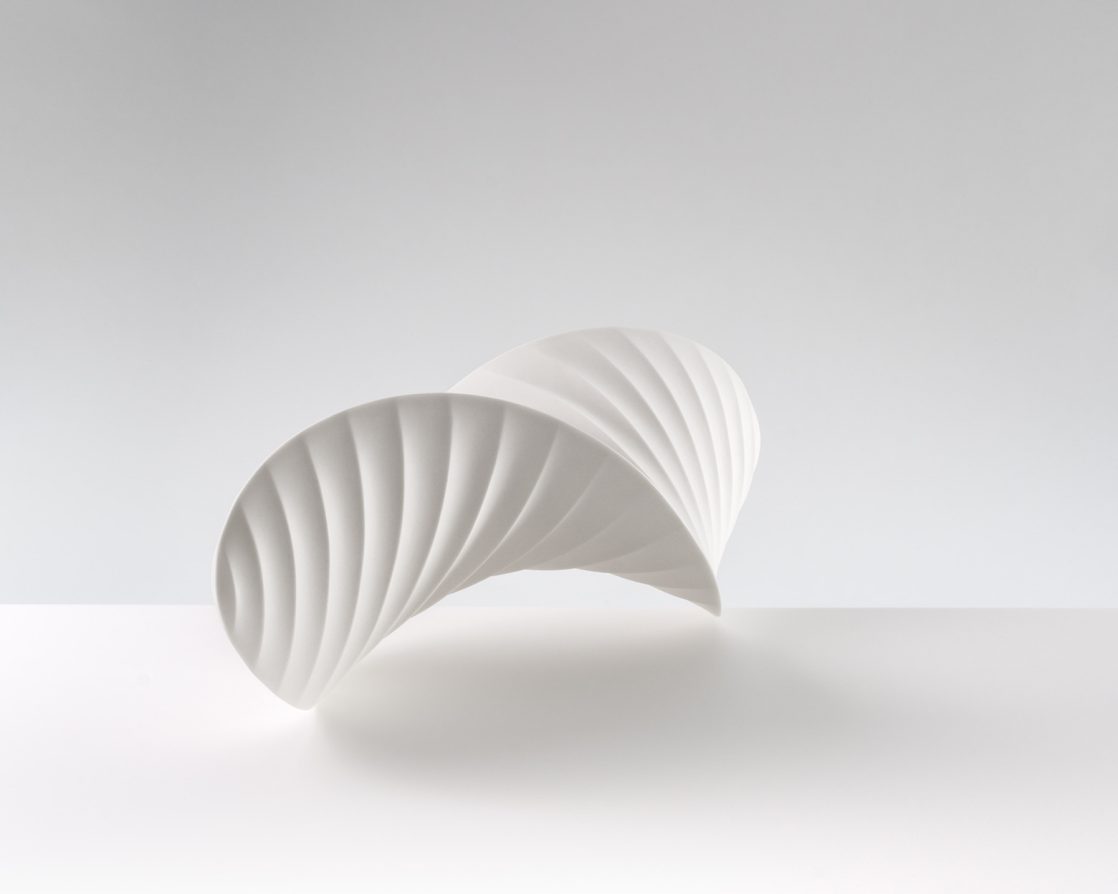
The process of using his computer expertise with his ceramic knowledge began a body of work with unending creative possibilities: forms he could imagine, but not create by hand. The beauty of designing forms in software is that it allows one endless possibilities of creation simply not possible in any other format.
The explosion of creation began. Goudy spent the better part of 2020 learning to use Rhinoceros 3D CAD software and Grasshopper algorithmic modelling software. He uses a low-cost 3D printer to make mother moulds, from which he then creates his plaster slip-casting moulds. ‘My work lives at the intersection of organic forms grounded in the natural world and digital 3D algorithmic design. As an engineer turned artist, I think of my work as mathematics in porcelain, celebrating the connection between art and science,’ he explains.
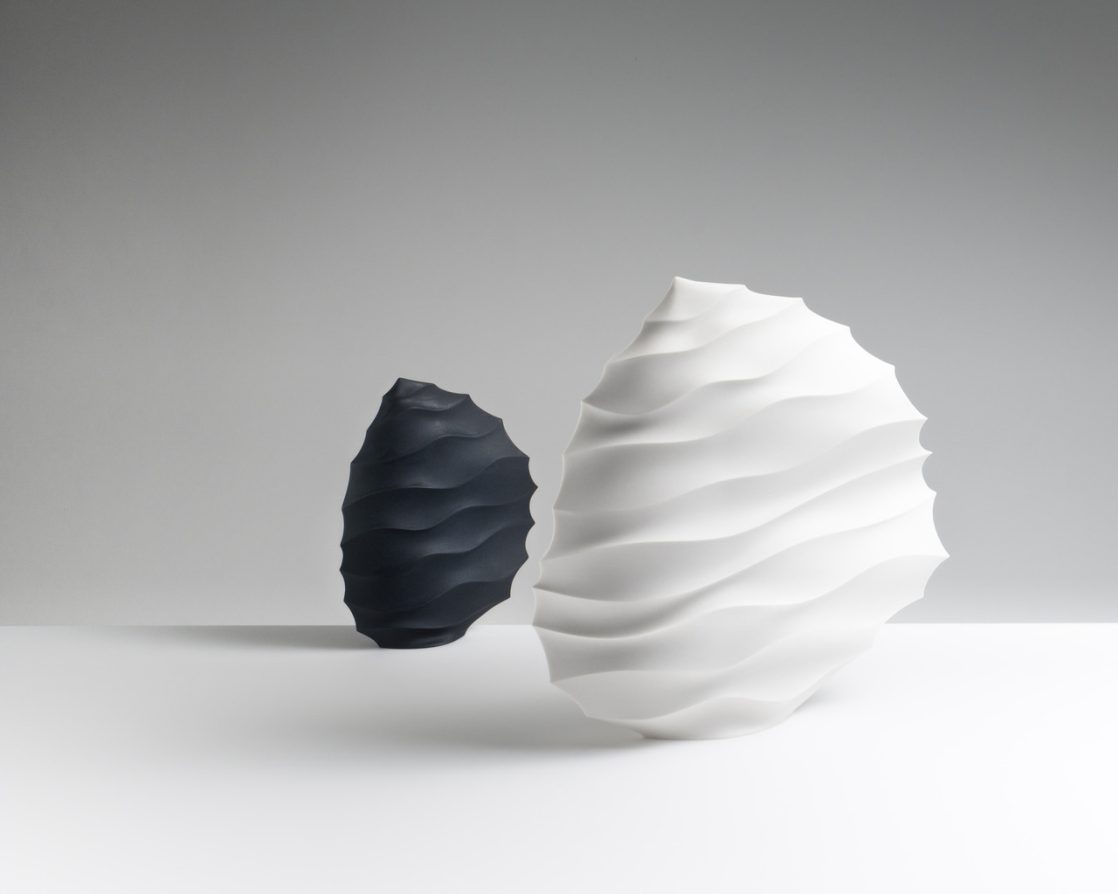
COMBINING TECHNIQUES
In making these complex and unusual forms, Goudy reveals: ‘My Wave Form series consists of minimal radial forms that share the features of simple sine wave curves that wrap around the object to define ridges and valleys. My process is to sketch the root form, define the wave frequencies and repetitions, then use Grasshopper and Rhino 3D to integrate these elements to create a digital model of the form and the mould needed to cast it. From the computer model, I then print a physical (positive) mother mould and use this directly to cast the (negative) plaster slip-casting version. The 3D printer is the bridge between virtual and physical objects. Once I have the plaster moulds, I slip-cast my thin, translucent porcelain objects, just as I have been doing for many years.’
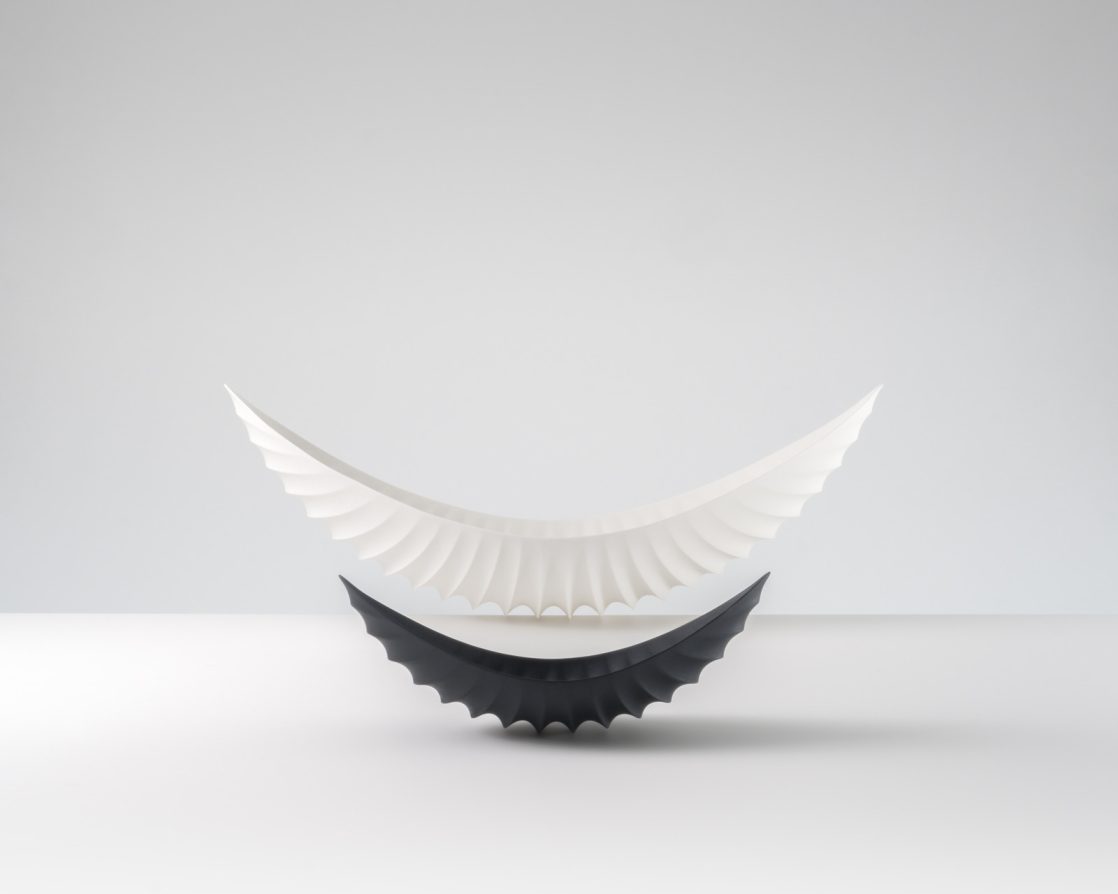
His Origami series, inspired by the Japanese art of paper-folding demonstrates more fully his extensive knowledge of design comprehension. He constructs the form with a series of creases, using repetition and interpolation. Within Grasshopper, he shapes the individual creases ‘with elliptic and parabolic curves, sometimes bent further with sine and cosine waves. The corrugated surfaces are joined together in software to create various multi-sided forms’.
All of his work is meticulously hand-sanded to remove mould artefacts and refine the form, culminating in slip-cast, unglazed, translucent porcelain objects that echo the feel of paper.
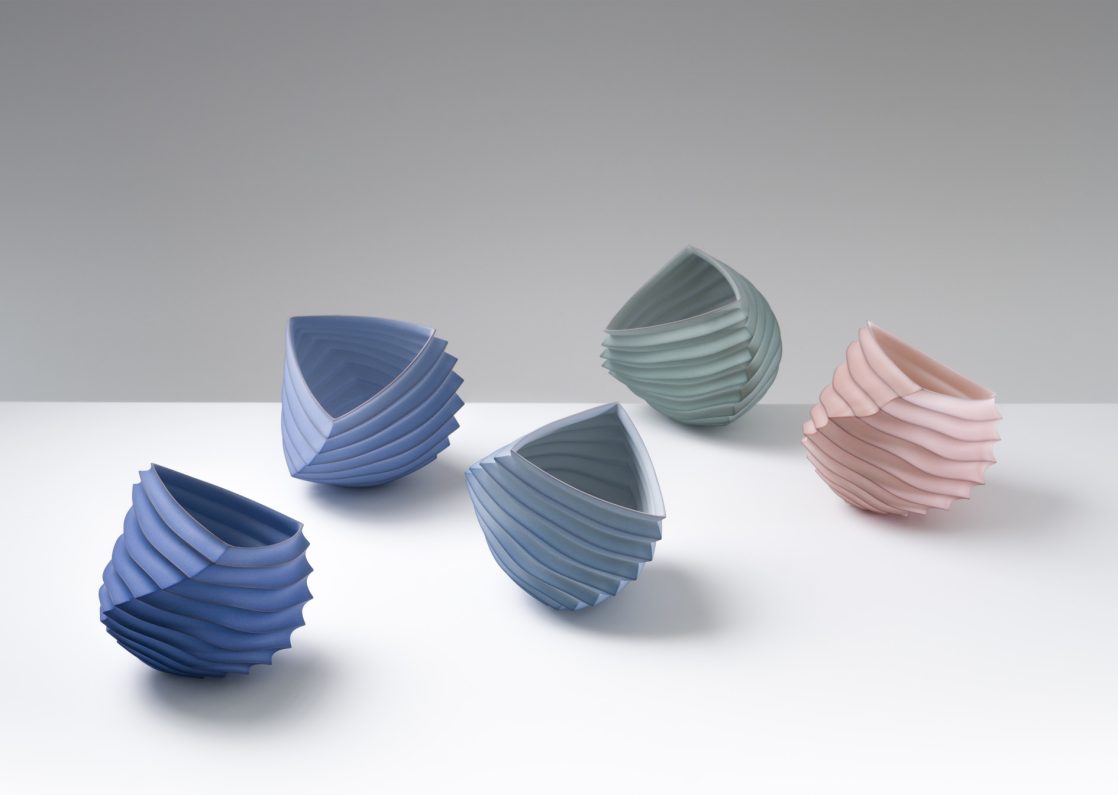
The possibilities to create forms inspired by his imagination, travels and knowledge are limitless. He has truly come full circle in his mastery of learning and understanding, to now launch a completely different method of creation. There are not many artists who can combine the technical knowledge with the creative vision as Mark Goudy, making him an extraordinary and visionary artistic voice at this time.
For more details visit markgoudy.com; @mark_goudy